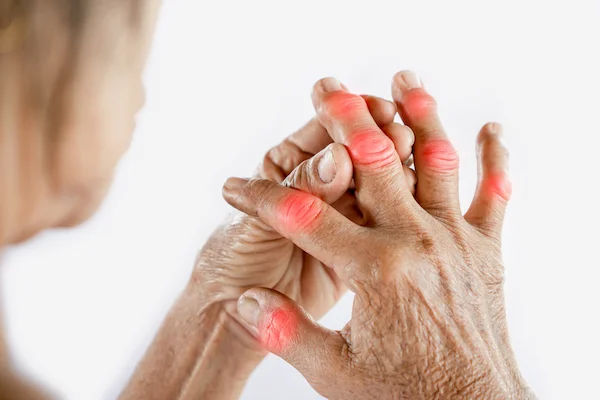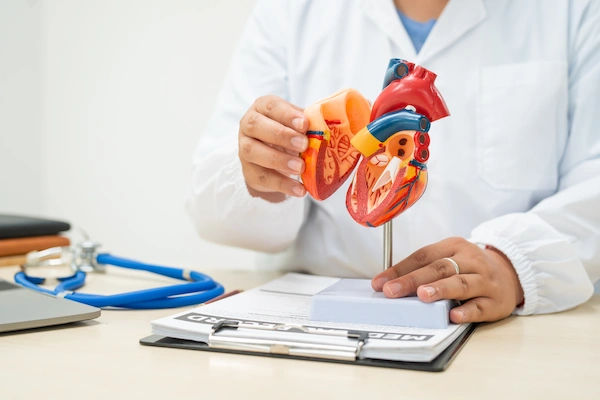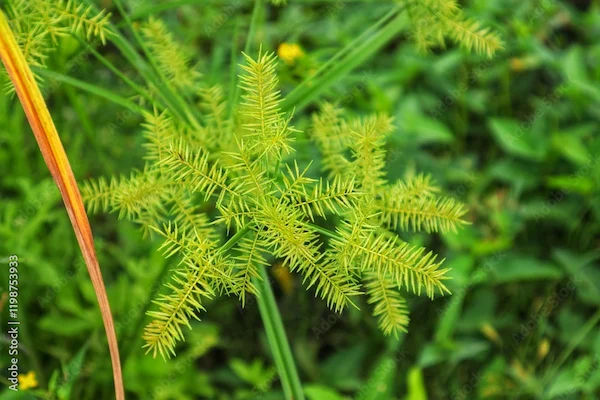Guide to Joint Health Awareness On World Arthritis Day
Learn how to protect your joint health, recognise early signs of arthritis, and adopt lifestyle habits for better mobility this World Arthritis Day.

Written by Dr. J T Hema Pratima
Reviewed by Dr. Shaik Abdul Kalam MD (Physician)
Last updated on 27th Sep, 2025

Introduction
Our joints are the unsung heroes of our body, enabling every movement from a gentle stroll to a triumphant victory dance. Yet, we often take them for granted until a twinge of pain or a feeling of stiffness reminds us of their vital role. With World Arthritis Day shining a global spotlight on joint health, there's no better time to understand how to care for these crucial connections. This guide is your comprehensive resource for everything related to joint health, from the basic anatomy that keeps you moving to proactive strategies for preventing pain and maintaining mobility throughout your life. Whether you're looking to prevent future issues or manage existing concerns, empowering yourself with knowledge is the first step toward a more active, pain-free future.
Understanding Your Joints: The Body's Moving Parts
Healthy joints are essential for movement, flexibility, and overall quality of life.
What Exactly is a Joint?
Think of a joint as a sophisticated hinge where two bones meet. But it's far more than a simple connection. Joints are complex structures designed to provide stability while allowing a smooth range of motion. They come in different types, with the most common being synovial joints like your knees, hips, and shoulders, which offer the greatest movement. Understanding this basic structure is fundamental to grasping why joint health is so critical for everyday function.
The Silent Workhorses: Cartilage, Synovial Fluid, and Ligaments
The magic of pain-free movement happens thanks to a few key components. Cartilage is the smooth, rubbery tissue that covers the ends of bones, acting as a shock absorber to prevent bone-on-bone friction. Imagine it as the protective cushion inside the joint. Surrounding this is the synovial membrane, which produces synovial fluid. This thick fluid acts as both a lubricant, reducing friction, and a source of nutrients for the cartilage. Finally, ligaments are tough, elastic bands of tissue that connect bones to each other, providing stability and preventing excessive movement. When any of these components are compromised, joint health declines, leading to discomfort and stiffness.
Consult an Orthopaedician for the best advice
Common Threats to Joint Health
Various factors can compromise joint health, leading to pain, stiffness, and reduced mobility.
Osteoarthritis: The "Wear-and-Tear" Arthritis
Osteoarthritis (OA) is the most common form of arthritis, often described as a "wear-and-tear" condition. It occurs when the protective cartilage that cushions the ends of your bones wears down over time. This can lead to pain, swelling, and difficulty moving the joint. While ageing is a primary risk factor, managing joint health through weight control and avoiding repetitive stress can significantly slow its progression.
Rheumatoid Arthritis: The Autoimmune Challenge
Unlike OA, Rheumatoid Arthritis (RA) is an autoimmune disorder. This means the body's immune system mistakenly attacks its own tissues, primarily targeting the synovium, the lining of the membranes that surround the joints. This attack causes painful swelling, which can eventually lead to bone erosion and joint deformity. RA often affects joints on both sides of the body simultaneously and requires a different management approach focused on controlling the autoimmune response.
Other Joint Conditions: Gout, Lupus, and Psoriatic Arthritis
Beyond OA and RA, other conditions can impact joint health. Gout is characterised by sudden, severe attacks of pain and redness, often in the big toe, caused by a buildup of uric acid crystals. Lupus and psoriatic arthritis are other autoimmune conditions that can cause widespread inflammation, including in the joints. Recognising the different types of arthritis is crucial for getting the right diagnosis and treatment.
Proactive Steps for Optimal Joint Care
Taking proactive measures can help maintain joint health and prevent future problems.
Fuel Your Joints: An Anti-Inflammatory Diet
What you eat plays a significant role in inflammation levels throughout your body. An anti-inflammatory diet for joint health can be a powerful tool. Focus on incorporating:
• Omega-3 Fatty Acids: Found in fatty fish (saloon, mackerel), walnuts, and flaxseeds, these are renowned for their anti-inflammatory properties.
• Colourful Fruits and Vegetables: Berries, leafy greens, and broccoli are packed with antioxidants that combat cellular damage.
• Spices: Turmeric and ginger have potent natural anti-inflammatory effects.
• Conversely, try to limit processed foods, sugary drinks, and excessive red meat, which can promote inflammation.
Move It or Lose It: The Best Exercises for Joints
Contrary to what one might think, movement is medicine for joints. Regular activity strengthens the muscles around the joints, providing better support and stability. The best exercises for joint pain are low-impact. Consider:
• Swimming or Water Aerobics: The buoyancy of water supports your weight, reducing stress on hips, knees, and spine.
• Cycling: Whether stationary or outdoors, cycling builds leg strength without jarring the joints.
• Yoga and Tai Chi: These practices improve flexibility, balance, and range of motion.
• Strength Training: Strong muscles act as shock absorbers. Focus on controlled movements with light weights or resistance bands.
Weight Management: Lightening the Load on Your Joints
Every extra kilogram of body weight puts approximately four times the pressure on your knees. Maintaining a healthy weight is one of the most effective ways to preserve joint health, particularly in weight-bearing joints like hips and knees. Even a small amount of weight loss can significantly reduce pain and slow the progression of osteoarthritis.
Posture and Ergonomics: Protecting Joints Daily
How you sit, stand, and lift objects has a profound impact on your joints. Poor posture places uneven stress on joints, leading to wear and tear. Ensure your workspace is ergonomic; your feet should be flat on the floor, your screen at eye level, and your lower back supported. When lifting, bend your knees, not your back, to protect your spine and hip joints.
When to Seek Help: Recognising the Red Flags
While occasional aches are normal, persistent symptoms warrant attention. You should consult a healthcare professional if you experience:
• Joint pain that lasts for more than two weeks.
• Severe joint pain, especially if it's accompanied by swelling, redness, or warmth.
• Inability to move the joint normally or a noticeable decrease in your range of motion.
• Joint symptoms that interfere with your daily activities and sleep.
World Arthritis Day: A Global Call for Awareness
World Arthritis Day (observed on October 12th) is more than a date on the calendar; it's a unified global movement. Its mission is to raise awareness about the prevalence and impact of rheumatic and musculoskeletal diseases (RMDs), which affect millions worldwide. This day encourages education, advocates for better patient care, and empowers individuals to take control of their joint health. It's a reminder that you are not alone and that understanding your body is the first step toward a healthier, more active life.
Conclusion: Your Joints, Your Future
Your joint health is inextricably linked to your overall quality of life. The ability to move freely, without pain, is a gift worth protecting. This World Arthritis Day, make a commitment to become an active participant in your own well-being. Incorporate the principles of smart nutrition, regular low-impact exercise, and mindful daily habits into your routine. Remember, proactive care today can prevent significant problems tomorrow. If you have concerns about persistent joint pain or stiffness, don't hesitate to take the next step. Consult a doctor online with Apollo24|7 for further evaluation and create a personalised plan to keep your joints healthy for years to come.
Consult an Orthopaedician for the best advice
Consult an Orthopaedician for the best advice

Dr. Anil Pradeep Jadhav
Orthopaedician
23 Years • MBBS MS (Ortho)
Nashik
Apollo Hospitals Nashik, Nashik
(25+ Patients)
Dr. Anil Sharma
Orthopaedician
42 Years • MBBS, MS Orthopedics
New Delhi
AAKASH MEDSQUARE, New Delhi

Dr. Manoj Dinkar
Orthopaedician
15 Years • MBBS, Dip (Orthopaedics)
New Delhi
THE DOCTORS NESST, New Delhi

Dr. Pradeep Lucas
Orthopaedician
7 Years • MBBS, Diploma in Orthopaedics, Fellowship in DFSI
Bengaluru
Revival Multispeciality Clinic, Bengaluru

Dr. Mriganka Ghosh
Orthopaedician
11 Years • MD (Physician), DNB (Orthopaedics)
Howrah
Dr Mriganka Mouli Ghosh, Howrah
Consult an Orthopaedician for the best advice

Dr. Anil Pradeep Jadhav
Orthopaedician
23 Years • MBBS MS (Ortho)
Nashik
Apollo Hospitals Nashik, Nashik
(25+ Patients)
Dr. Anil Sharma
Orthopaedician
42 Years • MBBS, MS Orthopedics
New Delhi
AAKASH MEDSQUARE, New Delhi

Dr. Manoj Dinkar
Orthopaedician
15 Years • MBBS, Dip (Orthopaedics)
New Delhi
THE DOCTORS NESST, New Delhi

Dr. Pradeep Lucas
Orthopaedician
7 Years • MBBS, Diploma in Orthopaedics, Fellowship in DFSI
Bengaluru
Revival Multispeciality Clinic, Bengaluru

Dr. Mriganka Ghosh
Orthopaedician
11 Years • MD (Physician), DNB (Orthopaedics)
Howrah
Dr Mriganka Mouli Ghosh, Howrah
More articles from General Medical Consultation
Frequently Asked Questions
1. What are the early signs of arthritis in hands?
Early signs often include minor pain or a dull ache in the fingers or wrist, especially after prolonged use. You might also notice slight stiffness in the mornings, minor swelling around the knuckles, or a feeling of weakness when gripping objects.
2. What's the difference between arthritis and regular joint pain?
Regular joint pain from overuse or a minor injury is usually temporary and resolves with rest. Arthritic pain is often persistent, may be accompanied by swelling, warmth, and redness, and can involve stiffness that lasts for more than 30 minutes after waking up.
3. Are there any natural supplements for joint health?
Glucosamine and chondroitin are popular supplements studied for osteoarthritis, with mixed evidence. Omega-3 fish oil is well-supported for its anti-inflammatory effects. It's important to discuss any supplements with your doctor before starting, as they can interact with medications.
4. Can cracking your knuckles cause arthritis?
The current scientific consensus is that knuckle cracking does not cause arthritis. The 'pop' sound is caused by gas bubbles bursting in the synovial fluid. However, habitual cracking can potentially lead to reduced grip strength or swelling in the hands.
5. How can I improve joint flexibility naturally?
Regular stretching, practices like yoga and tai chi, and staying consistently active are the best ways to maintain and improve joint flexibility naturally. It's important to stretch when your muscles are warm and to avoid bouncing, which can cause injury.




